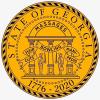All My Trials, Pt. 2
Pub Notes
Last week’s episode chronicled the arrest and brief incarceration of the 33 students who sat-in at President Fred C. Davison’s waiting room in Old College at the University of Georgia, on May 3, 1972. The group was finally reduced to eight as the result of bullying and intimidation by the judge and the university administration, in my biased opinion.
Among the seven (plus me as a faculty supporter) who refused to accept the plea bargain of a light fine and a year’s probation and faced the threat of jail time if we didn’t, were student leaders and leaders of the sit-in group and others who just refused to give in and admit that it was a crime for them to be in the president’s office. They were: Chuck Searcy, Steve Patrick, David Alonso, Tony Alonso (no relation), Steve Letzsch, Mike Walker and Scott McLarty. All in all, they were a great bunch of fellow misdemeanants.
Pressured to decide overnight whether to accept the plea, the eight of us fired the “movement” lawyers whom we felt had represented us poorly and gained time to hire our own lawyer and fight the charge of criminal trespass, with its potential penalty of a $1,000 fine and a year in jail. This was not a case that most local lawyers would touch, but one of our number led us to Alan Alexander, sort of a maverick in his own right, though not politically. Alan enjoyed the notoriety of the situation, and his young law clerk, Jim Warnes, was intrigued and amused by this scruffy batch of new clients.
After the law’s usual delays and a spate of new business for local barbershops and haberdashers, The Athens Eight got their day in court—in this case, State Court, presided over by Judge Grady Pittard, with Ken Stula as solicitor (prosecutor).
Stula laid out the case: the presence of the students was disruptive: they refused to leave when asked to do so and when they were told that President Davison wouldn’t be there that day and that the secretaries couldn’t get any work done, etc. In our defense, Alan just put each of us, one after the other, on the stand to tell who we were and why we did what we did.
The clean-cut young men in suits proceeded to lay out for the jurors in the most high-minded terms what they were trying to accomplish on campus and why it was so important that they were willing to risk their college careers and their reputations in behalf of their ideals.
Enough of the jurors (most) were impressed with our testimony that the jury couldn’t find against us and ended without being able to reach a verdict, which we took as a clear victory for us, that we hadn’t been convicted. We had made our point, and we had fought the university to a draw. Surely they wouldn’t come back and try us again. But they did.
In Round Two, the university came in determined to win, and Stula bore down. We went with our tried-and-true defense of young men in suits with earnest statements. This time, though, our testimony sounded more self-serving than idealistic, and the university wasn’t messing around; they knew what to expect from us and how to counteract our righteousness. Even so, the jury deliberated 10 hours and came back to be re-charged, at which point Judge Pittard basically told them that if we were there, we were guilty. And so, we were, and sentenced to fines of $500 each and a year on probation.
The Davison administration went on to consolidate its power over faculty and students, while transforming UGA from the collegial model of broad participation in university governance to the more corporate, top-down structure we have today.
It was the last of the big-time college sit-ins, and it probably went for nought, but it changed my life and some others and made lasting friendships. Even Ken Stula proved to be a likable guy once he no longer felt professionally compelled to compare me to Lee Harvey Oswald.
Perhaps even unsuccessful protests serve as benchmarks to help us assess where we are today, where we’ve come from, where we need to go, maybe even back to the president’s office.
Hear “Live with Gwen and Pete” Thursdays at noon on WXAG 1470-AM.
Keywords
More by Pete McCommons
-
Voting Absentee: Necessary But Not Easy
Pub Notes
-

Be Ready When National TV Comes Calling
Pub Notes
-










comments